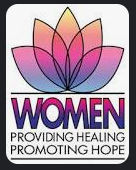 COVID Corner
COVID Corner
The Centers for Disease Control has eased it’s face mask guidelines. The CDC is moving away from looking only at COVID case numbers and is looking toward a more holistic approach that includes caseloads, hospitalizations and hospital capacity. Under current guidelines, some 95% of U.S. counties are considered areas of substantial or high transmission, meaning masks are recommended. The new guidelines remove those designations, meaning a lot of Americans will no longer live in areas where indoor masking in public is recommended.
Daily COVID-19 cases in the U.S. reached a record high of 1.34 million on Jan. 10, and the rolling average of daily cases surpassed 800,000 in mid-January, according to the Centers for Disease Control and Prevention (CDC). Since then, the average number of daily cases has dropped significantly, falling to less than 140,000 as of Feb. 17.
Montana’s Daily Average Cases has dropped to a low of 592 as reported on February 21, 2022 (the highest reported 7 day average was 2,386 on January 30, 2022). Most counties in Montana and are still considered HIGH transmission areas and are recommending face mask wearing, regardless of vaccination status. Big Horn, Powder River, Sheridan and Daniel counties are not considered high transmission areas.
COVID-19 Community Levels are a new tool to help communities decide what prevention steps to take based on the latest data. Levels can be low, medium, or high and are determined by looking at hospital beds being used, hospital admissions, and the total number of new COVID-19 cases in an area. Check out your community area (county) by going to this website: COVID rates by county in US
Here’s what the CDC is recommending for Gallatin County, Montana:
In Gallatin County, Montana, community level is High.
- Wear a mask indoors in public
- Stay up to date with COVID-19 vaccines
- Get tested if you have symptoms
- Additional precautions may be needed for people at high risk for severe illness
People may choose to mask at any time. People with symptoms, a positive test, or exposure to someone with COVID-19 should wear a mask.
 Importance of Financial Wellbeing to Employees
Importance of Financial Wellbeing to Employees
A survey done in the fall of 2021 found that financial wellbeing is driving many employees to seek employment elsewhere.
- 74% would leave their job for a company that offered better financial benefits
Also of note is that the gender pay gap still exists. There were higher reported rates of financial wellness amongst men than women: only 37% of women rated themselves as stable, compared to 61% of men. Also, it was found that in addition to saving more, men have also been spending more since the start of the pandemic — 44% reported their spending had increased, compared to 30% of women.
The survey supported that employees are searching for employers that can provide more financial wellness. Employers should ensure that benefits your business currently offers are communicated well to current employees as well as to potential employees. Additionally, employers should review benefits offerings in order to retain current employees and attract potential employees. There are easy, inexpensive ways to provide employees with a comprehensive, integrated financial wellness package that can offer retirement benefits, emergency funds, investing, access to financial advisors, and other planning tools.
TogetHR Consulting can assist in reviewing and assessing the relevancy of your benefits package and assist with ensuring your benefits package meets the needs of your employees.
The full survey is available here: Betterment’s Employee Financial Wellness Report.
 Jobs Report
Jobs Report
The most recent Jobs Report reflects unemployment stats from the week ending February 19th. New unemployment claims dropped by 17,000 from the previous week- 232,000 workers filed new unemployment claims. In contrast, one year ago, over 800,000 workers filed new unemployment claims.
The total number of workers continuing to claim unemployment benefits—1.4 million—is well below its pre-pandemic average of 1.7 million. The latest monthly employment report for January showed the unemployment rate at 4%. Montana’s unemployment rate is currently 2.5%. Economic data suggests that employers are putting an extra focus on retention in an environment of near-record job vacancies, which has contributed to the low level of jobless claims.
From February 2020 to January 2022, male workers regained all jobs they had lost due to the pandemic, according to an analysis by the National Women’s Law Center of the latest U.S. Bureau of Labor Statistics report. However, 1.1 million women left the labor force during that span, accounting for 63 percent of all jobs lost. While women gained 188,000 jobs in January 2022, they are still short by more than 1.8 million jobs lost since February 2020. According to the report, it would take women nearly 10 months of growth at January’s level to regain the jobs they lost.
Millions of women left the job market to care for their children during the COVID-19 pandemic as schools and day cares closed to prevent the spread of disease. The pandemic greatly affected industries dominated by women of color, including food service, leisure, hospitality and retail. Women of color quit or were laid off in large numbers as the pandemic progressed.
The NWLC report showed that unemployment rates among women of color were higher than those for white women.In January 2022, 3.6 percent of all women were jobless. However, nearly 5 percent of Latinas and nearly 6 percent of Black women were unemployed. Women with disabilities were most affected, as nearly 8 percent of this group were jobless, the NWLC report showed.
 Women’s History Month
Women’s History Month
Women’s History Month is a dedicated month to reflect on the often-overlooked contributions of women to United States history. From Abigail Adams to Susan B. Anthony, Sojourner Truth to Rosa Parks, the timeline of women’s history milestones stretches back to the founding of the United States.
The actual celebration of Women’s History Month grew out of a weeklong celebration of women’s contributions to culture, history and society organized by the school district of Sonoma, California, in 1978. Presentations were given at dozens of schools, hundreds of students participated in a “Real Woman” essay contest and a parade was held in downtown Santa Rosa.
A few years later, the idea had caught on within communities, school districts and organizations across the country. In 1980, President Jimmy Carter issued the first presidential proclamation declaring the week of March 8 as National Women’s History Week. The U.S. Congress followed suit the next year, passing a resolution establishing a national celebration. Six years later, the National Women’s History Project successfully petitioned Congress to expand the event to the entire month of March.
The 2022 Women’s History theme, “Providing Healing, Promoting Hope,” is both a tribute to the ceaseless work of caregivers and frontline workers during this ongoing pandemic and also a recognition of the thousands of ways that women of all cultures have provided both healing and hope throughout history.
Women as healers harken back to ancient times. Healing is the personal experience of transcending suffering and transforming it to wholeness. The gift of hope spreads light to the lives of others and reflects a belief in the unlimited possibilities of this and future generations. Together, healing and hope are essential fuels for our dreams and our recovery.
This year, in particular, we are reminded of the importance of healers and caregivers who are helping to promote and sustain hope for the future. The NWHA encourages communities throughout the country to honor local women who bring and have historically brought these priceless gifts to their families, workplaces, and neighborhoods, sometimes at great sacrifice. These are the women who, as counselors and clerics, artists and teachers, doctors, nurses, mothers, and grandmothers listen, ease suffering, restore dignity, and make decisions for our general as well as our personal welfare.
Women have long advocated for compassionate treatments and new directions in public health and in women’s mental and physical health. Women have also historically led the way in mending divisions, healing wounds, and finding peaceful solutions. This timeless work, in so many ways and in addition to so many other tasks, has helped countless individuals in our communities recover and follow their dreams.
The 2022 theme proudly honors those who, in both public and private life, provide healing and promote hope for the betterment of all.